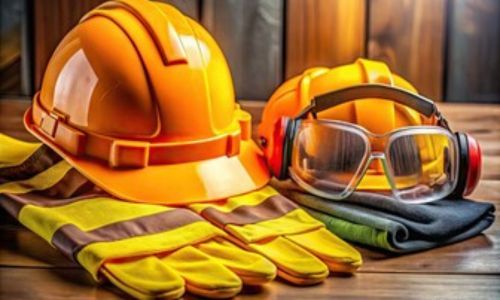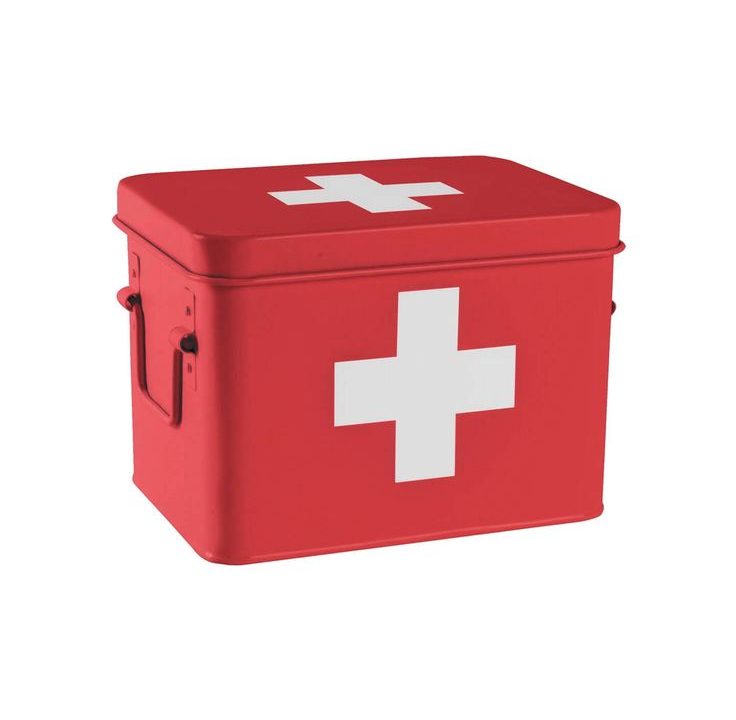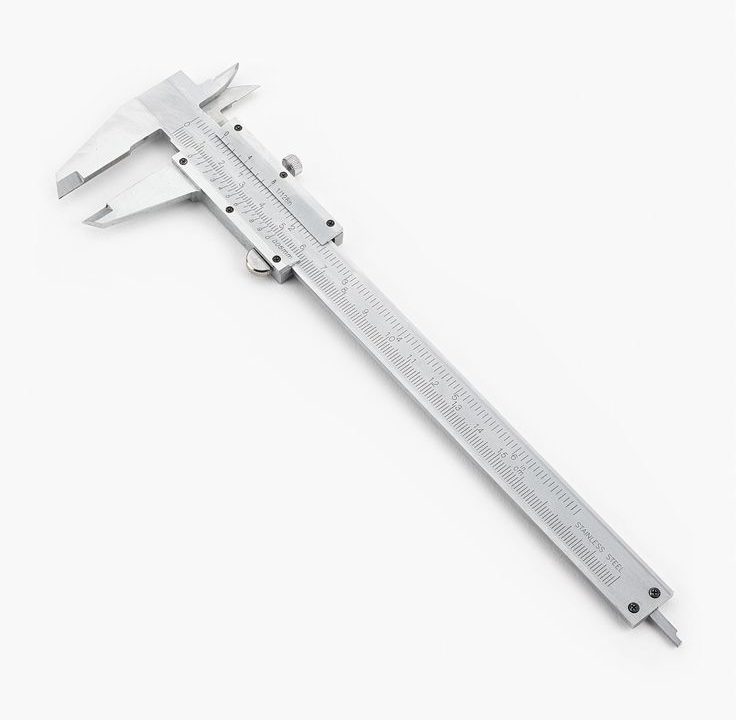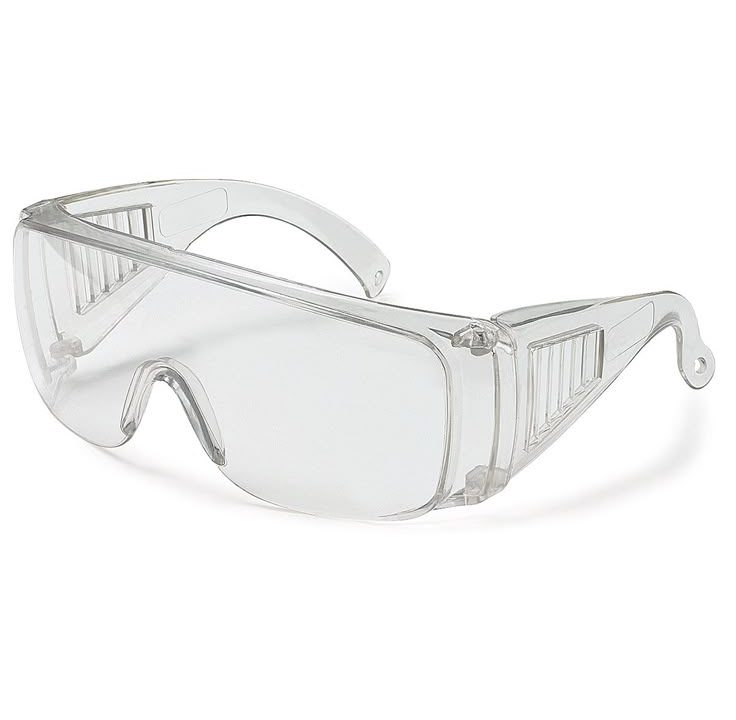Top 8 Industrial Safety Equipment Mistakes and How to Avoid Them

How To Use Vernier Caliper Step By Step, A Practical Guide
March 27, 2025
First Aid Box for Your Home: Why It’s Important and What to Include
April 22, 2025When working in dangerous environments, industrial safety equipment is not just a nice-to-have—it’s absolutely essential. Every year, thousands of workers get injured or even lose their lives due to accidents that could have been avoided.
The Occupational Safety and Health Administration (OSHA) reports that about 5,000 workers die annually because of workplace injuries. This number is shocking, and many of these deaths happen because equipment wasn’t used properly or, in some cases, wasn’t even available.
If you’re in charge of safety at your workplace, you know how important it is to have the right equipment. However, even if you’re following all the rules and taking safety seriously, mistakes can still happen.
This blog will walk you through the top eight mistakes that often happen when using industrial safety equipment and, most importantly, show you how to avoid them. By understanding these common errors, you can better protect your workers and make sure your workplace stays safe and compliant with the necessary safety standards.
Key Takeaways
- Always inspect and maintain industrial protective equipment regularly to ensure it’s functioning properly.
- Invest in the right personal safety gear that fits the specific needs of your workplace.
- Provide ongoing training to ensure workers are proficient in using the equipment.
- Purchase equipment from trusted suppliers to ensure quality and compliance with safety standards.
Importance of Safety Equipment in Industries
Safety rgear is super important in industries, especially in places where there are risks or dangers. It helps protect workers from accidents and injuries that could happen while they’re working.
Whether you’re on a construction site, in a factory, or handling chemicals, safety gear keeps workers safe from things like falling objects, electrical shocks, harmful chemicals, and extreme heat or cold.
Without the right equipment, workers are more likely to get hurt or even killed. It’s not just about following the rules—it’s about taking care of the people who help your business run smoothly. Having the right protective gear can really help prevent accidents and make workers feel more confident and secure.
- Safety gear keeps workers safe from hazards on the job.
- It helps prevent accidents and injuries, making the workplace safer.
- Using the right gear makes workers feel more confident at work.
- It helps you follow safety rules and avoid legal problems.
- Regular use of protective gear helps create a safety-first culture at work.
Common Safety Gear Mistakes and How to Avoid Them
Sometimes, even when we try our best, mistakes can happen with protective equipment. Knowing what these mistakes are and how to avoid them is important to keep everyone safe at work.
Mistake #1: Not Properly Inspecting Equipment
Industrial protective equipment is made to keep workers safe, but it can’t do its job if it’s broken or not working properly. For example, a helmet with a crack, old gloves, or a faulty respirator won’t offer the protection your workers need.
This is one of the most common mistakes and it can lead to serious accidents or injuries. If equipment is damaged or not in good condition, it won’t be effective when it’s needed the most.
- How to Avoid It
Make inspecting equipment a regular part of your work routine. Set up a system where workers are responsible for checking their gear before each shift. If they find any damage, they should report it right away so you can fix or replace it quickly.
You can also set up reminders to check the expiration dates of things like fire extinguishers or first aid kits to make sure everything is ready in case of an emergency.
Mistake #2: Using Inadequate Personal Protective Equipment (PPE)
Not all personal protective equipment is the same. Sometimes, workers use the wrong gear for the job. For example, using a general-purpose respirator instead of one made specifically for toxic chemicals can cause serious health problems.
The right equipment is essential for protecting workers from various dangers, whether it’s extreme heat, electrical hazards, or dangerous chemicals. Using the wrong PPE might seem like a small mistake, but it can have serious consequences, especially when workers are exposed to harmful environments.
Choosing the wrong gear puts workers at risk of injuries, long-term health issues, or even fatalities. It’s important to make sure that the gear is designed for the specific task at hand.
- How to Avoid It
Always make sure the PPE you use is suited to the specific hazard. For example, if you’re working in high temperatures, pick gear that is heat-resistant. If you’re dealing with chemicals, make sure to use PPE that’s rated for chemical protection.
To ensure you’re making the right choice, consult with trusted safety equipment suppliers who understand the unique needs of your industry. Investing in the right equipment is key to keeping workers safe.
Mistake #3: Failing to Provide Proper Training
Even the best safety equipment won’t help if workers don’t know how to use it correctly. Without proper training, workers might misuse the equipment, or worse, not use it at all.
This can be just as dangerous as not having the right equipment in the first place. If workers don’t fully understand how to use safety gear, they won’t get the protection they need, which could lead to serious accidents or injuries.
- How to Avoid It
Make sure to give your workers regular training on how to properly use all equipment. This training should include hands-on practice, as well as information on why each piece of gear is important.
It’s also a good idea to ask the suppliers for any training materials or instructions when you buy new gear. The more knowledgeable your workers are, the safer they will be.
Mistake #4: Skipping Regular Maintenance
Most industrial protective equipment needs regular maintenance to stay in good working condition. If you ignore this, the equipment may fail when it’s needed the most, putting workers at risk.
For example, the straps on a safety harness can become weak over time, or the seals on a respirator can break if they’re not cleaned and checked regularly. If maintenance is forgotten or delayed, the equipment might not protect workers as it should.
- How to Avoid It
To prevent this, set up a maintenance schedule for all your equipment. Create a simple checklist for each item, making sure to clean and check it according to the manufacturer’s instructions.
Keep a record of all maintenance tasks to track when equipment was last checked or repaired. This will help ensure that everything is always ready to protect your workers when needed.
Mistake #5: Not Purchasing Equipment from Trusted Suppliers
Buying industrial safety equipment online from suppliers who are not reliable or properly verified can result in getting low-quality products that may not meet the required safety standards.
Using these inferior products can increase the risk of accidents and injuries in the workplace. It can also lead to serious legal problems if your company fails to comply with safety regulations, which could result in fines or other penalties.
- How to Avoid It
When buying safety gear, always choose well-known, trusted suppliers who have a good reputation. If you’re searching for “safety equipment near me” or looking for “safety equipment suppliers in Sri Lanka,” take the time to check out reviews and verify their credentials.
A reliable supplier should offer high-quality equipment that meets safety standards and regulations, ensuring that you’re getting the protection your workers need.
Mistake #6: Ignoring the Fit and Comfort of PPE
When protective gear is uncomfortable or doesn’t fit properly, workers are more likely to remove it or avoid using it altogether. This makes the equipment less effective and increases the chances of accidents.
Whether it’s shoes that are too tight, gloves that are too bulky, or helmets that don’t sit right, discomfort can stop workers from using their PPE correctly. If the gear doesn’t feel good, workers might not wear it when they really need it.
How to Avoid It
Make sure that the PPE is not just safe, but also comfortable for your workers. Offer a range of sizes and make adjustments to ensure a good fit.
Check in with workers regularly to see if they’re happy with the fit of their safety gear, and make changes whenever needed. Comfortable PPE encourages workers to wear it consistently, which keeps them safe on the job.
Mistake #7: Not Keeping Equipment Accessible
In an emergency, the last thing you want is for workers to waste precious time looking for emergency equipment. When every second counts, having the right equipment ready and easy to reach can make a huge difference in preventing injuries or even saving lives.
How to Avoid It
Make sure equipment is stored in clear, easy-to-find locations. Assign specific spots for each item so that workers know exactly where to go when they need it most. You can also use labels or color-coding to help workers quickly spot the equipment they need.
It’s also a good idea to keep an updated inventory log so you can always check that your equipment is stocked and in good condition. This ensures everything is ready when it’s needed the most.
Mistake #8: Underestimating the Cost of Safety Equipment
Some businesses try to save money by choosing cheaper equipment, thinking it will reduce their costs. While it might seem like a good idea at first, low-quality equipment can lead to accidents, injuries, and even lawsuits.
In the long run, this can end up being much more expensive than investing in good-quality gear from the start.
How to Avoid It
Instead of cutting corners, focus on buying high-quality equipment that meets all safety standards. While the safety equipment price in Sri Lanka or any other place may appear high at first, remember that failing to prioritize safety can cost you a lot more later.
Think about the long-term benefits and the potential risks you avoid by choosing reliable equipment from trusted suppliers. It may cost a little more upfront, but it’s well worth the investment to keep your workers safe and avoid bigger problems in the future.
Frequently Asked Questions (FAQs)
What are the 7 types of Personal Protective Equipment?
The seven types of personal protective equipment (PPE) are:
- Head protection (like helmets and hard hats)
- Eye protection (such as goggles or face shields)
- Hearing protection (like earplugs or earmuffs)
- Respiratory protection (such as masks or respirators)
- Hand protection (gloves for various hazards)
- Foot protection (safety boots or shoes)
- Body protection (such as aprons or suits for certain tasks).
What are the risks of incorrect safety gear?
Using incorrect gear can leave workers exposed to dangerous situations, like falling objects or harmful chemicals. It may not protect as well, increasing the chances of accidents or injuries. Incorrect PPE can also lead to discomfort, making it more likely that workers will remove or misuse it.
What are the risks of not wearing proper protective gear?
Not wearing the right gear can result in serious injuries or even death. Workers could be exposed to harmful substances, sharp objects, or dangerous machinery. Without proper protection, accidents like burns, cuts, falls, and respiratory issues are more likely to happen.
What happens if PPE is damaged?
If PPE is damaged, it may not provide the protection it’s designed for. For example, a cracked helmet won’t protect against head injuries, and worn-out gloves might not protect against cuts or chemicals. Any damaged PPE should be replaced right away to maintain safety.
What is PPE for toxic hazards?
PPE for toxic hazards includes items that protect workers from harmful chemicals or substances. This may include chemical-resistant gloves, full-face respirators, and protective suits that prevent toxic materials from touching the skin or being inhaled.
Final Thoughts
At Safety First, we understand how critical it is to maintain a safe workplace. If you’re looking to buy safety equipment online or need advice on the best PPE for your industry, get in touch with us today. We’re here to help you protect your team and create a safer work environment.




